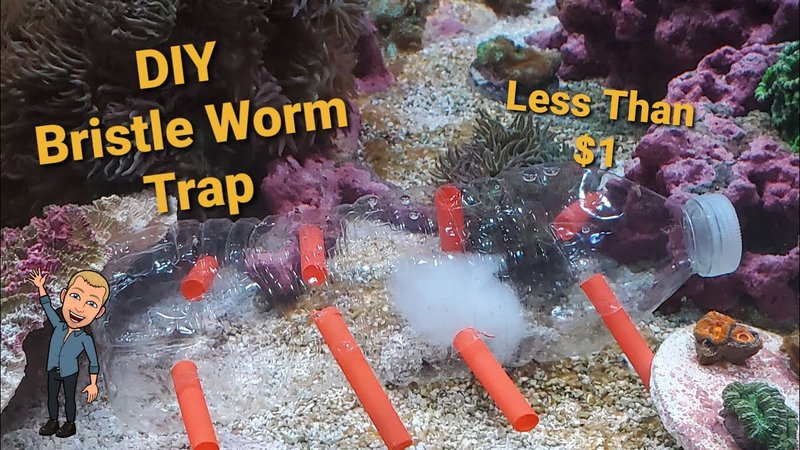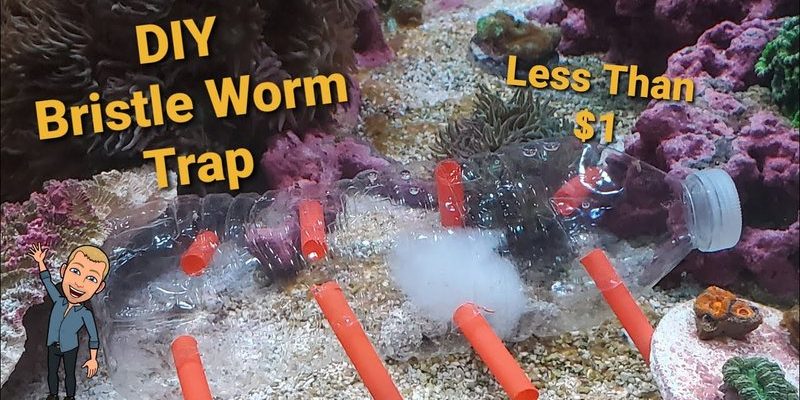
Creating DIY traps to remove bristle worms is not only a cost-effective solution but also gives you the satisfaction of doing it yourself. It’s like cooking a meal from scratch instead of ordering takeout—you know exactly what’s going into it and can control the outcome. So, let’s dive into some simple, effective traps that will help you reclaim your aquarium space while keeping your aquatic friends safe.
Understanding Bristle Worms
Before we jump into trap-making, let’s understand what bristle worms are and why they can cause issues in your aquarium. These creatures belong to the class Polychaeta and might seem beneficial because they help break down waste. However, when their population explodes, they can outcompete other organisms and become harmful.
Imagine you’ve got a garden. If you suddenly have too many weeds, they can choke out your flowers. Similarly, bristle worms can disrupt the balance of your tank, leading to overgrowth and potential harm to fish and corals. So, knowing how to manage their population is crucial for maintaining a healthy aquatic environment.
Creating a Simple Bristle Worm Trap
Now, let’s get into the fun part: creating your own traps! One of the simplest ways to trap bristle worms is by using a plastic bottle. Here’s what you’ll need:
- Plastic bottle (like a soda bottle)
- Scissors
- Fish food or a piece of raw shrimp
To make the trap, start by cutting the bottle in half. Take the top half and invert it into the bottom half, creating a funnel-like structure. The fish food or shrimp goes into the bottom half. When the bristle worms smell the bait, they’ll swim in, but won’t be able to escape. It’s like a party that’s hard to leave!
Once you set the trap in your tank, give it some time. You can check it after a few hours and dispose of any caught worms. Just be sure to remove the trap before it gets too crowded—think of it as keeping the party from getting out of control.
Using PVC Pipe as a Trap
If you’re up for a little more DIY action, consider making a trap using PVC pipe. This method can be quite effective and allows for a larger trap setup. Here’s how:
- Short piece of PVC pipe (about 6–8 inches long)
- End caps for the pipe
- Drill with a small bit
- Fish food or meat bait
First, drill small holes in the pipe—these will act as entry points for the bristle worms. Next, place some bait inside the pipe and cap one end. Leave the other end open for the worms to enter. Bury the trap in the substrate of your aquarium, leaving the open end visible. When the worms go for the bait, they’ll be trapped inside!
This method gives you a larger capacity, so you can capture multiple worms at once. Just remember to check the trap periodically to clean it out and reset it.
Bristle Worms and the Importance of Regular Monitoring
Once you’ve set your traps, it’s important to monitor your aquarium regularly. Keeping an eye on your fish and coral will help you identify if bristle worm numbers are decreasing. You might be wondering, “How often should I check?”
Here’s the thing: inspect your tank every few days. Look for signs of overpopulation, such as increased worm visibility or damage to your corals. By keeping track, you’ll have a better understanding of when to set new traps or if additional solutions are needed.
Regular maintenance is key in keeping your aquarium balanced. It’s like looking after a garden; a little pruning goes a long way in preventing weeds from taking over.
Alternative Trapping Methods
If you’re not a fan of the DIY route or want to explore other options, there are various trapping devices available on the market. Some specialized traps utilize light or chemical attractants, but let’s be honest—sometimes the simplest methods are the most effective.
For instance, the **commercial traps** usually come with a bait that lures in the bristle worms. They operate in a similar fashion to our homemade traps. While these devices might require a bit of an investment, they often do the job efficiently, so you end up spending less time and effort.
You might also consider adding **wrasses** to your tank. Certain fish species naturally hunt bristle worms, acting as a biological control. Just remember, this option requires some research to ensure compatibility with your current tank inhabitants.
Other Considerations When Removing Bristle Worms
While trapping is a great way to manage bristle worms, it’s important to consider the overall health of your aquarium. Here are a few things to keep in mind:
- Feeding habits: Overfeeding can lead to larger populations of bristle worms. Be cautious about how much food you’re adding.
- Tank filtration: Ensure your filtration system is working properly. A clean tank reduces waste buildup, giving bristle worms fewer nutrients.
- Regular maintenance: Performing regular water changes helps keep the environment stable and may reduce worm attraction.
Keeping your aquarium clean and balanced is essential for not just keeping bristle worms at bay but also for the health of your fish and corals. It’s like brushing your teeth regularly—you avoid cavities and keep your smile bright!
Dealing with bristle worms doesn’t have to feel overwhelming. By making simple traps and regularly monitoring your aquarium, you can maintain a balance in your aquatic ecosystem. The key is to be proactive rather than reactive. A little DIY work here and there, combined with regular maintenance, will go a long way in keeping those pesky worms at bay.
Remember, aquariums are living ecosystems. Keeping them healthy requires attention, care, and the right tools. So take a moment to appreciate your tank, get crafty with your traps, and enjoy the beauty of your underwater world!

